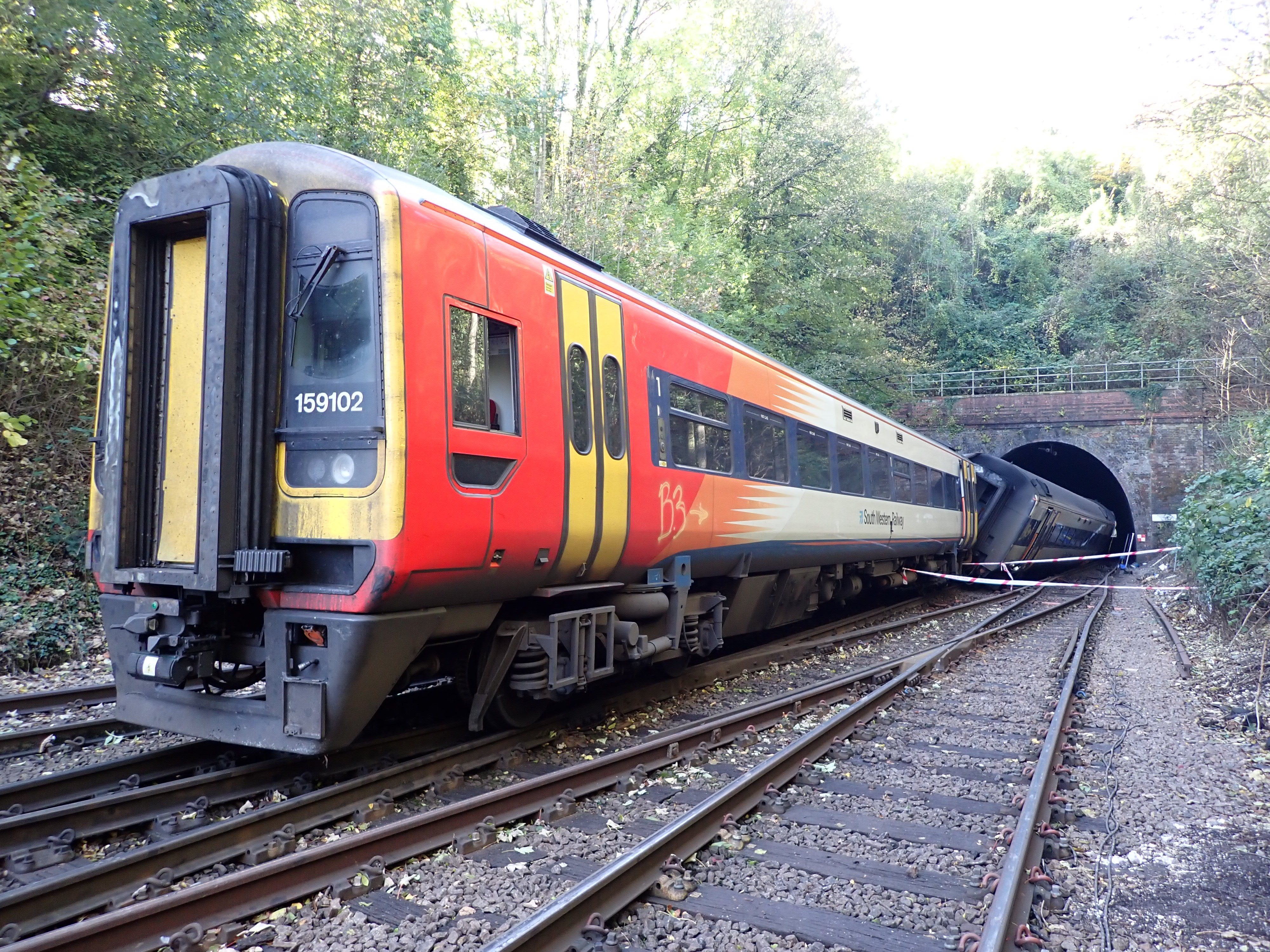Salisbury Tunnel Junction collision
The accident resulted in injuries to 13 passengers and a serious injury to the driver of the SWR train, all of whom required hospital treatment.
RAIB’s preliminary investigation found that the SWR train passed a signal at danger that was protecting the GWR train’s movement over the junction, despite the driver braking in the way expected on approach. This is likely to be because of low adhesion between the train’s wheels and the rails, causing wheels to slide.
In February 2022, RAIB published its interim report. This provided more detail about the nature of the accident, and verified that low adhesion had been a primary cause.
RAIB’s investigation is ongoing and when complete, the final report will provide recommendations and provide more detail about what happened and why. Along with other organisations in the railway family, we will be supporting the process. As industry’s independent safety body, RSSB is ready to help where needed, to support the investigation and our members in understanding and analysing the issues and responses required.

Salisbury Tunnel Junction, photo courtesy of RAIB
Train accidents are rare, and the railways are much safer than other modes of transport. One of the reasons for Britain’s railways having a positive safety record is the rigour and effort that goes into learning why things go wrong and ensuring risk is reduced and managed.
Our statement
Immediately following the accident, RSSB’s Chief Executive Officer, Mark Phillips, said:
“This train accident will have been a terrifying experience for the passengers and the train drivers involved. While we can be thankful that no one was killed, one of the drivers suffered serious injuries, and passengers were also harmed. The initial assessment by RAIB suggests poor rail adhesion caused the Waterloo train to pass a signal at danger, and strike the Portsmouth train. RSSB will of course make its knowledge and research available, and is ready to work with all our members to help prevent similar accidents occurring in the future.”
We help our members and the wider rail industry work together to maintain and improve safety, underpinned by our independent analysis, research and insights. Below are links to some of our work on the topics that have been mentioned. Please note this is not designed to pre-empt the investigations—it is simply a set of links to recent work which may be of interest. Note some of this information is only available to members and affiliates.
-
Signals passed at danger (SPADs)The ‘SPAD management guide’ brings together the latest data, research and industry know-how on managing SPAD risk. The guide has six key areas, each with an accompanying set of articles that describe contemporary good practice. The articles also include the supporting tools, techniques, videos and resources that members can implement within their organisations.
-
AdhesionLow adhesion between rail and wheel can be caused by moisture on the rail mixing with the film produced by 'leaves on the line' or other contaminants, such as rust or grease. This can cause safety and performance risks, such as signals passed at danger and station overruns. A comprehensive research programme—called ADHERE—is dedicated to understanding the problem and has found that Double Variable Rate Sanders can improve braking to permit normal professional driving.
-
Seasonal preparednessNetwork Rail and train operators all put in a great deal of effort to plan for different seasonal conditions well in advance. The leaf-fall season is no different, with planning often starting at least six months beforehand, with a review of how things went the previous year. Our Rail Industry Standard, RIS-8040-TOM Iss 1 - Low Adhesion between the Wheel and the Rail - Managing the Risk helps organisations plan ahead, and supplements a range of mitigations aimed at improving resilience.
-
Rule BookThe Rule Book contains instructions for drivers and signallers about when to report poor adhesion and how. Train operators will also issue their own driving policies which provide additional instructions and guidance about how drivers should drive their trains.
-
Lineside vegetationIn 2019, expert advisor John Varley and RSSB were asked by the Government to review Network Rail’s approach to vegetation management. The report, ‘Network Rail vegetation management review’, aimed at protecting both safety and biodiversity. The report was published in 2018, and the annual review published in 2019, and can be found on the Gov.uk website.
-
Learning from other train accidentsThe most serious train accident caused by a SPAD in living memory is Ladbroke Grove in 1999. A lot has been learnt, and in 2019 we produced a report, ‘Ladbroke Grove 20 years on’ looking at what had changed in the 20 years since then.
-
Improving rolling stock through research and standardsOur research has supported improvements to rolling stock standards, helping trains perform better in accidents, and increasingly survivability. The most recent version of the Railway Group Standard is GMRT2100 Rail Vehicle Structures and Passive Safety issue 6.1. It’s important to note that this standard is not retrospective, so older trains will not necessarily meet the same requirements.
-
Rolling stock asset integrityRolling stock asset integrity is one of the twelve key risk areas the rail industry is addressing in its strategy, Leading Health and Safety on Britain’s Railways. We provide content to share updates on What the rail industry is doing around rolling stock asset integrity.
-
Leading Health and Safety on Britain's RailwaysLeading Health and Safety on Britain's Railway is the rail industry’s health and safety strategy. Developed by leaders across a range of rail sectors, this strategy sets out the challenges and activities which need collaborative approaches to deliver a better, safer and healthier railway across Great Britain.
